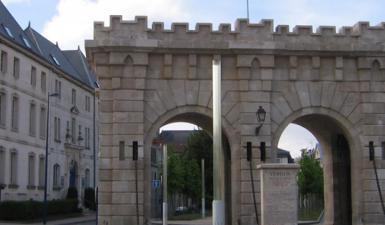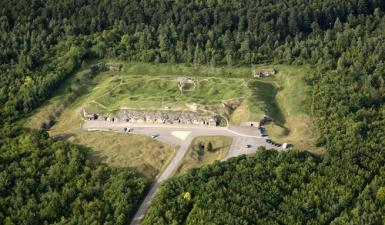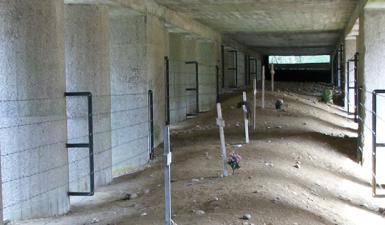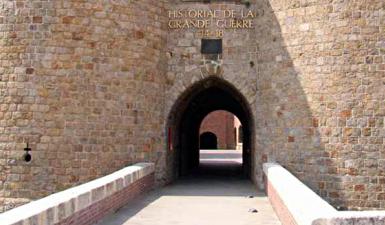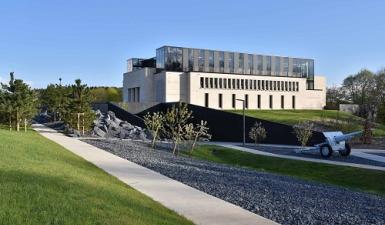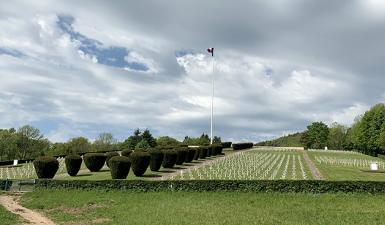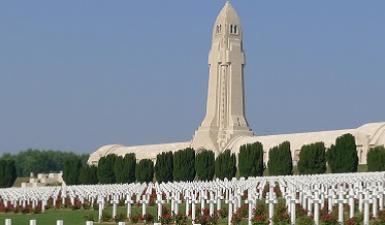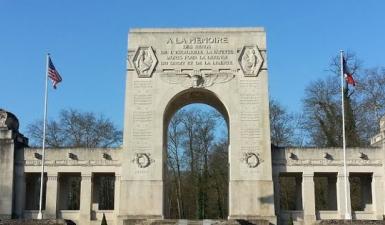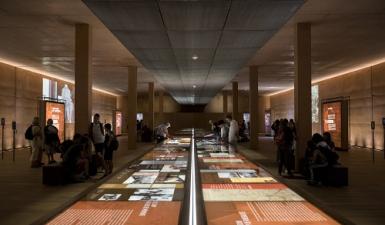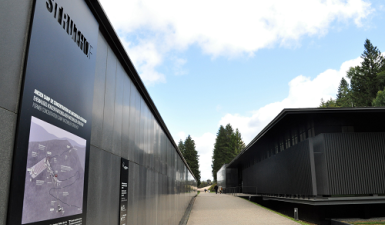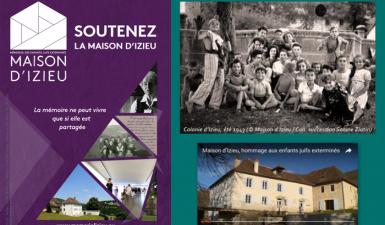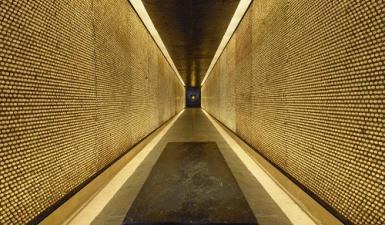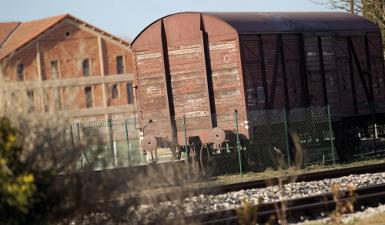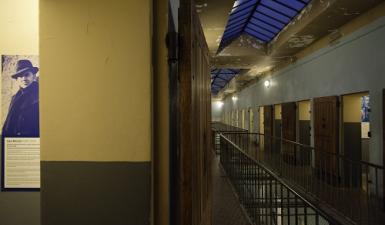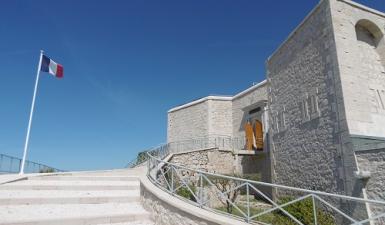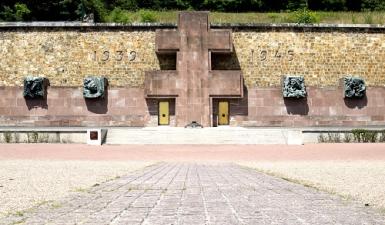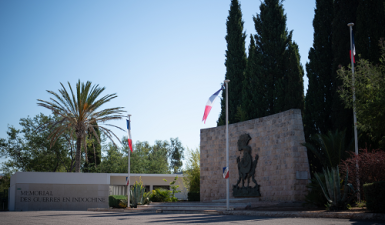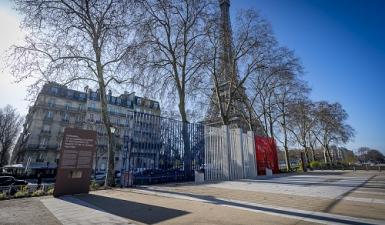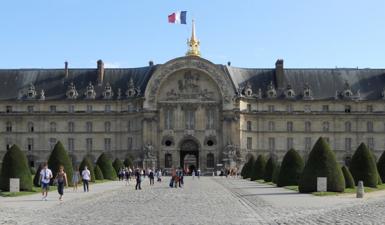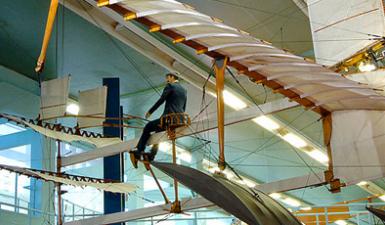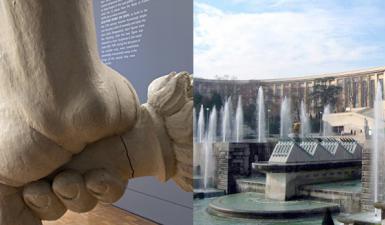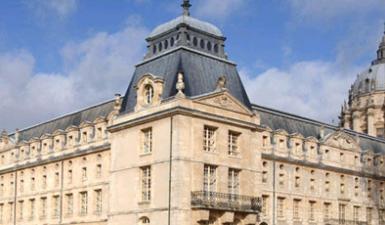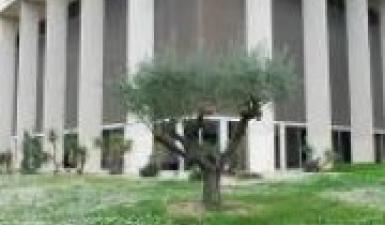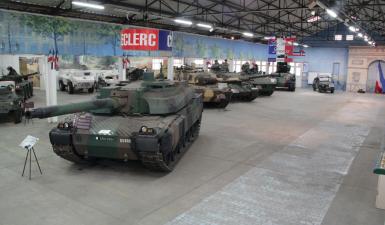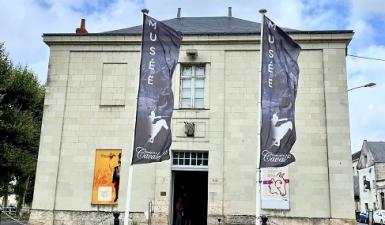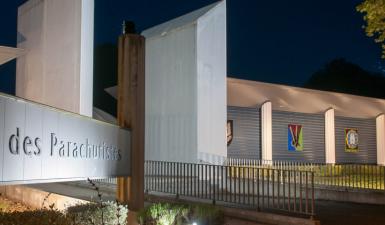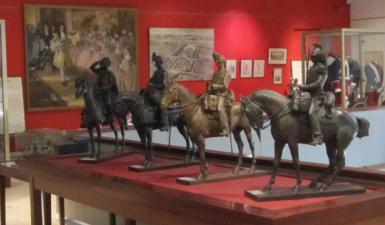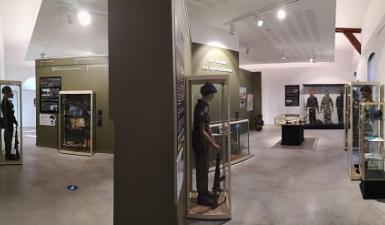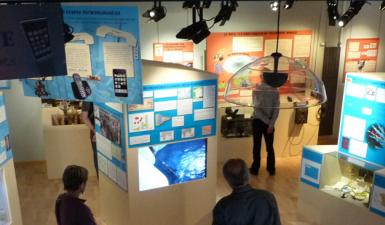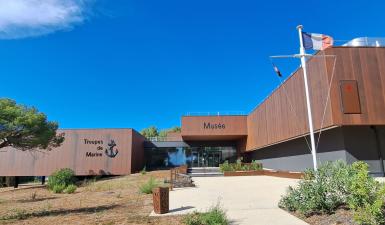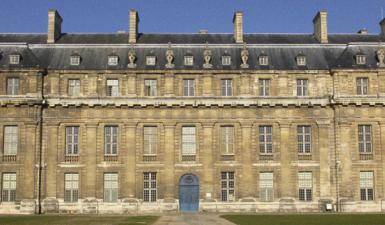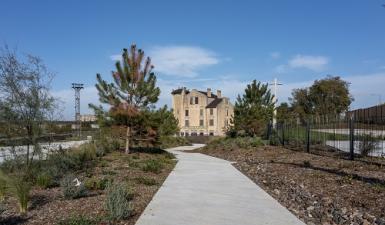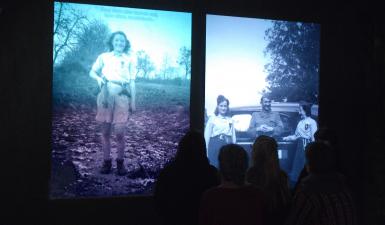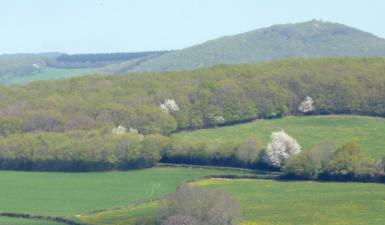Remembrance tourism, a national issue
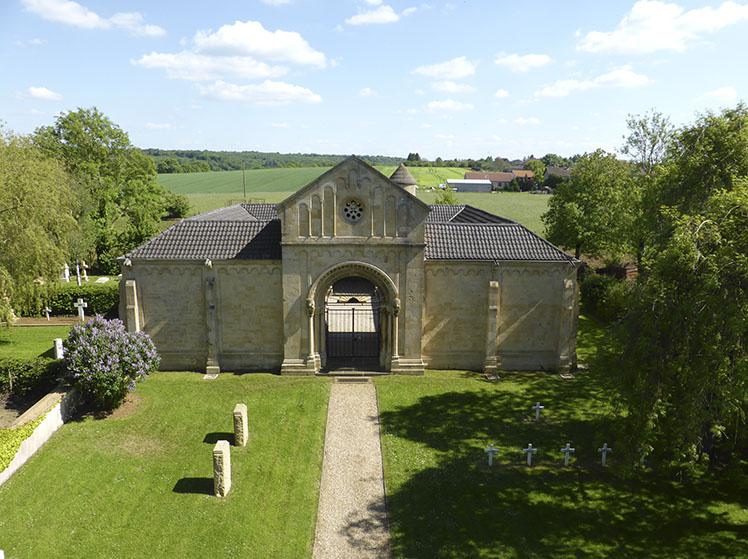
Contents
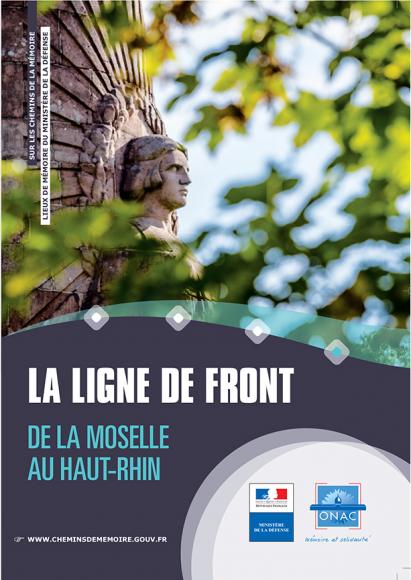
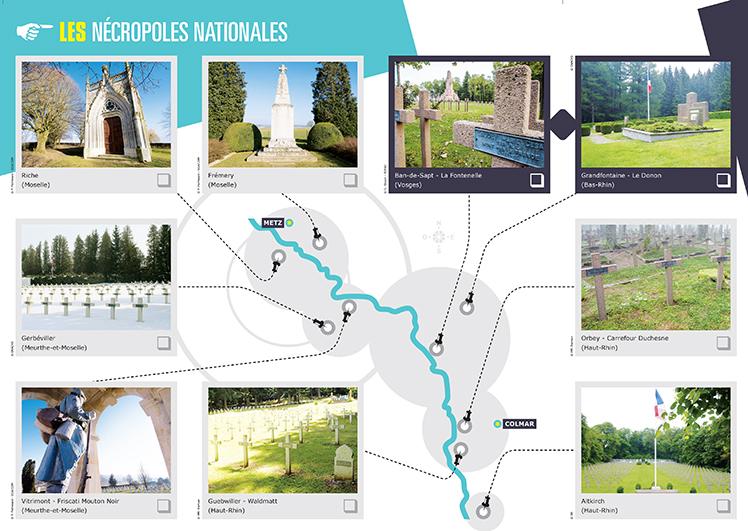
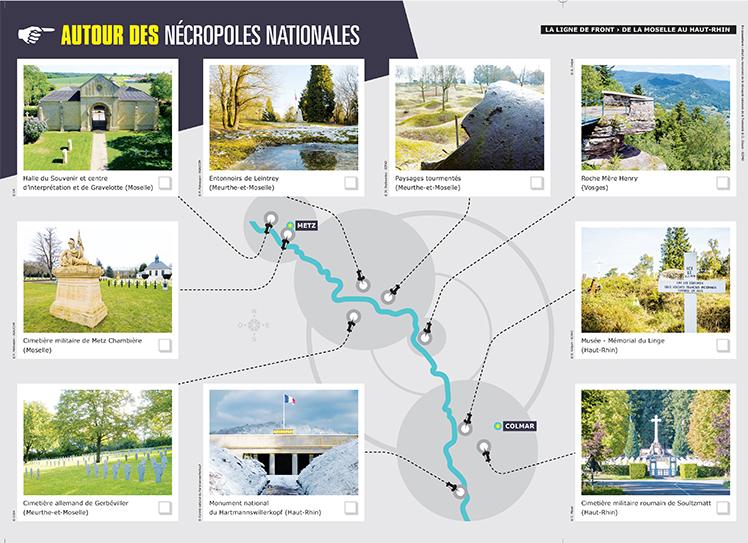
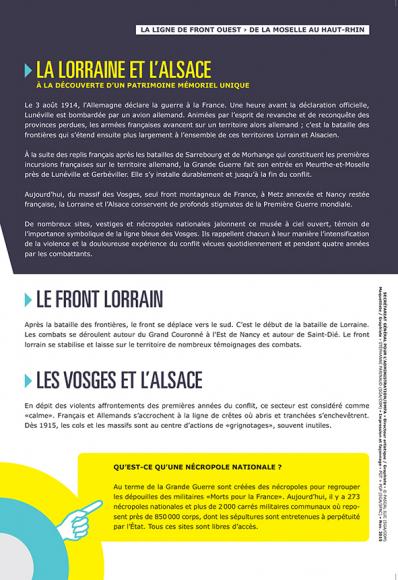
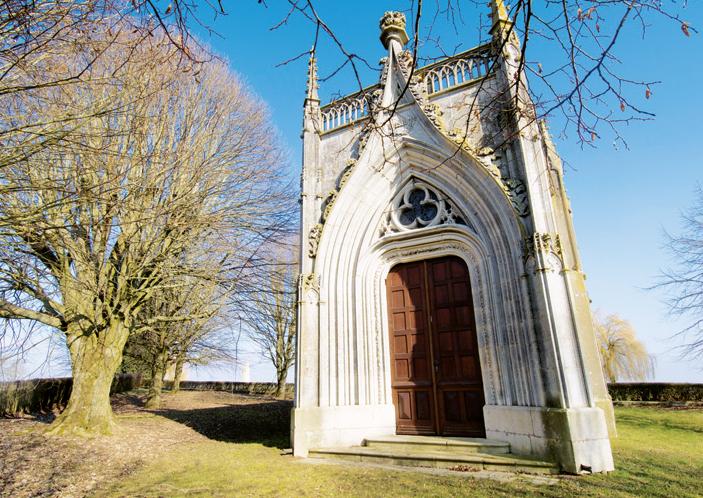
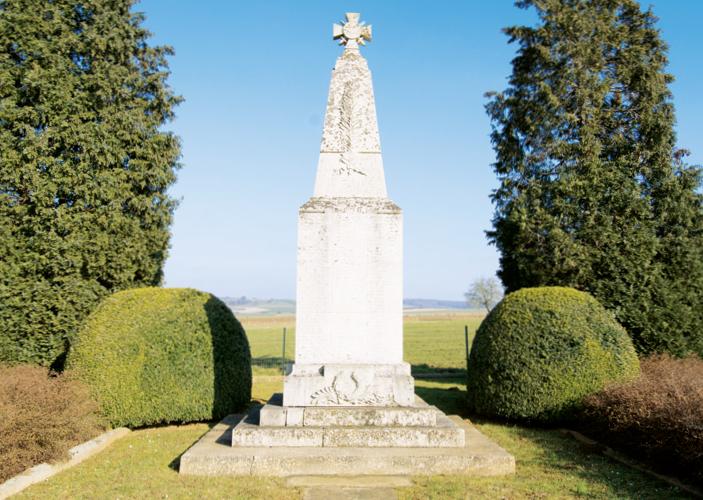
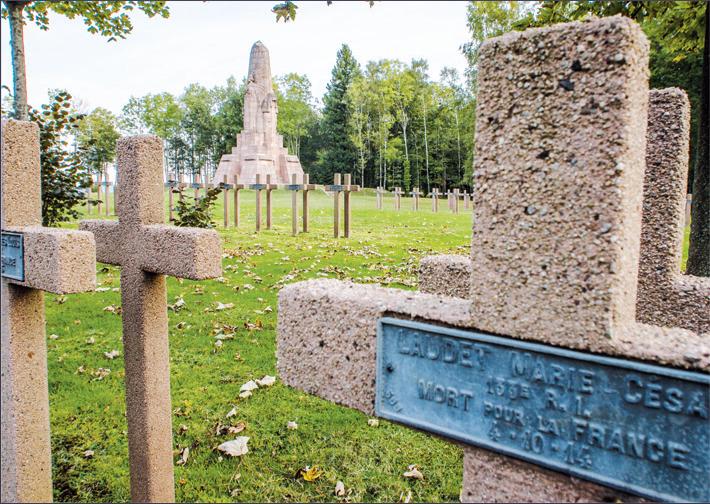
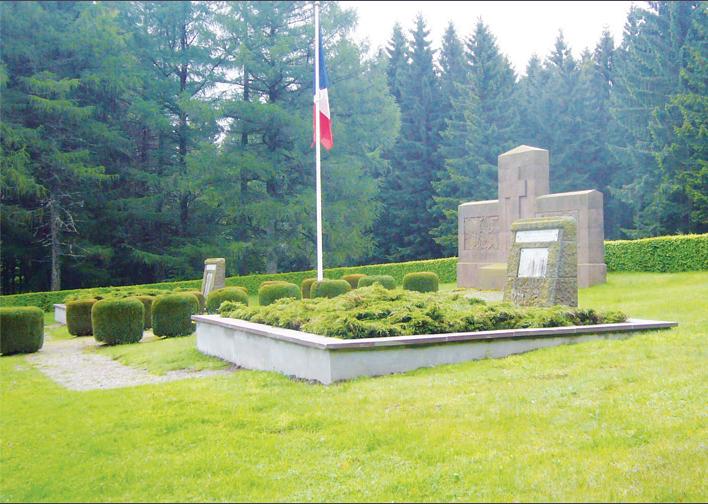
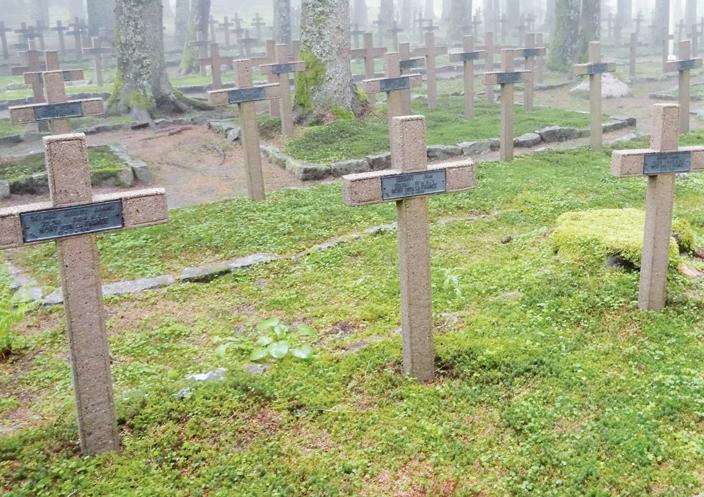
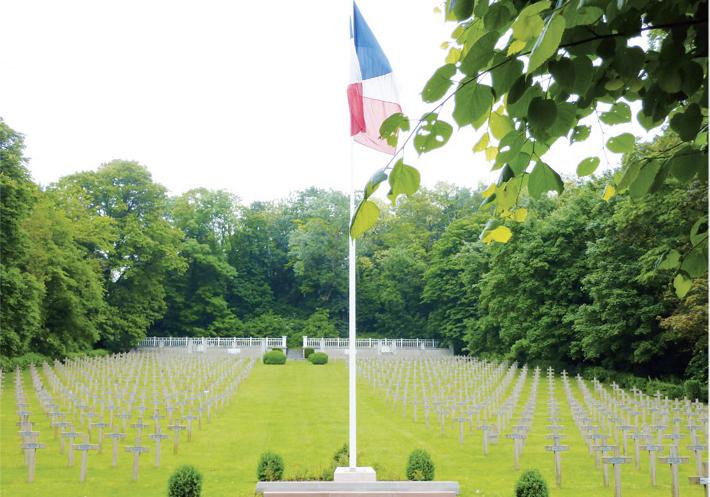
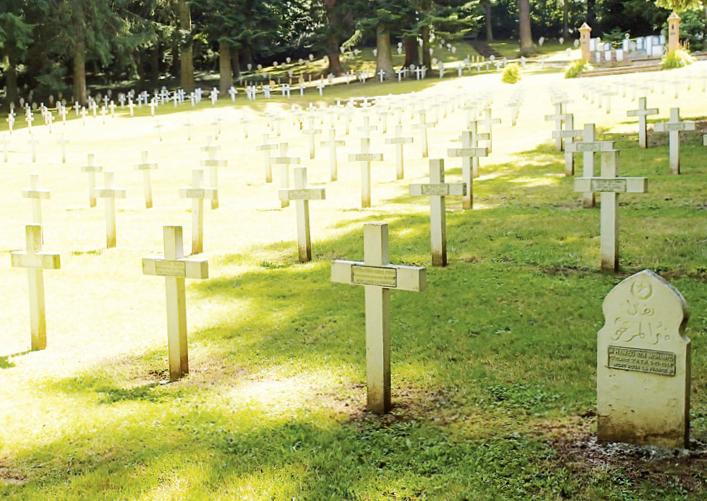
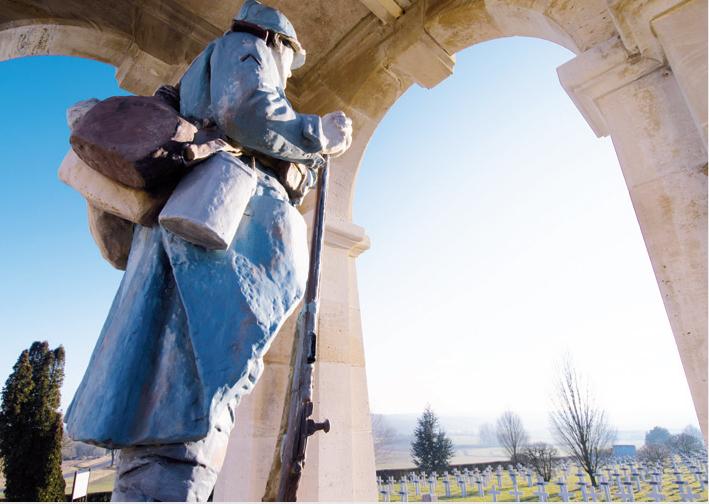
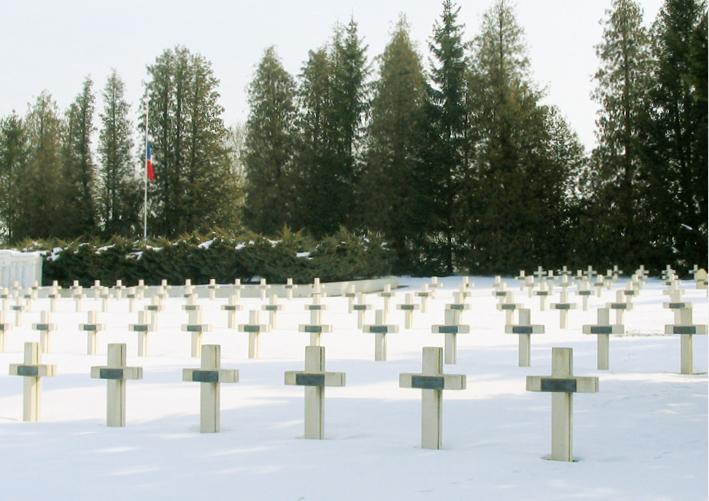
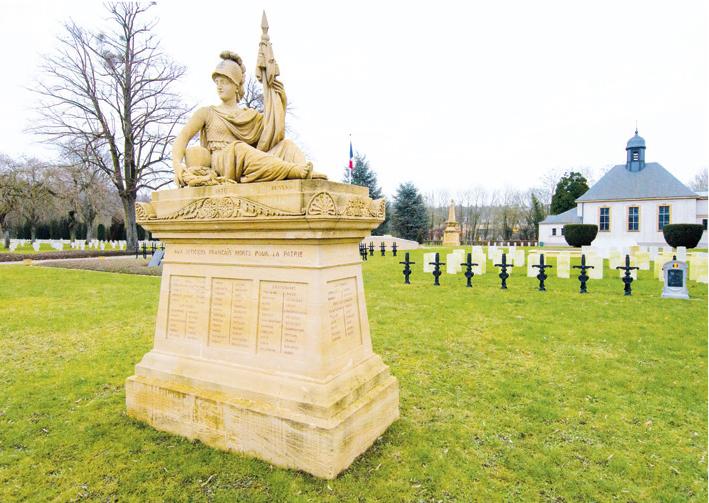
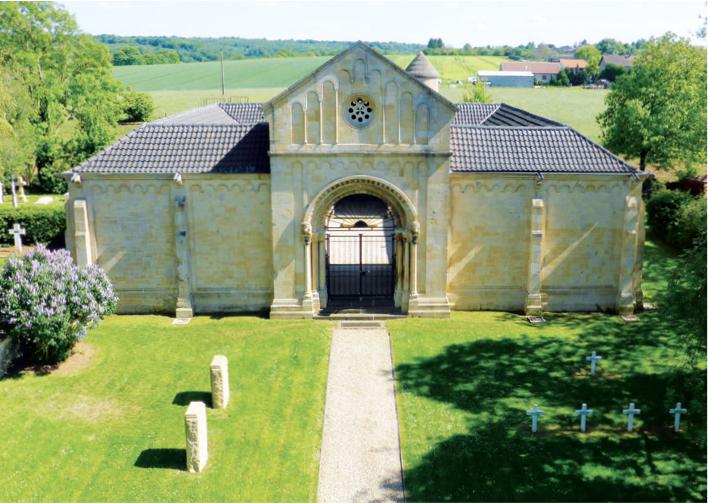
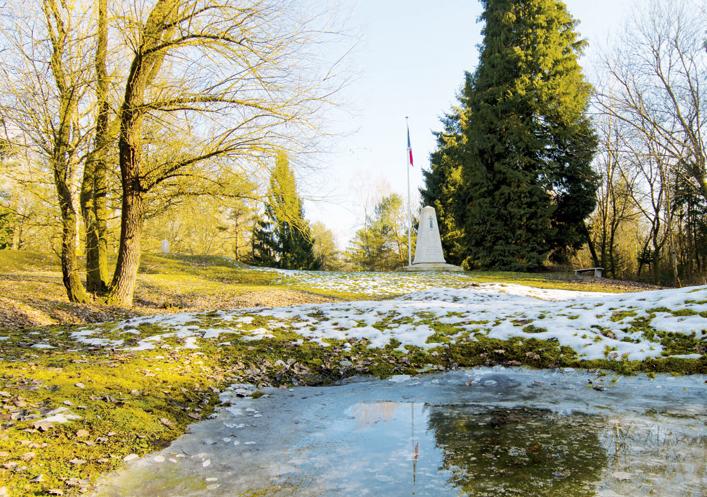
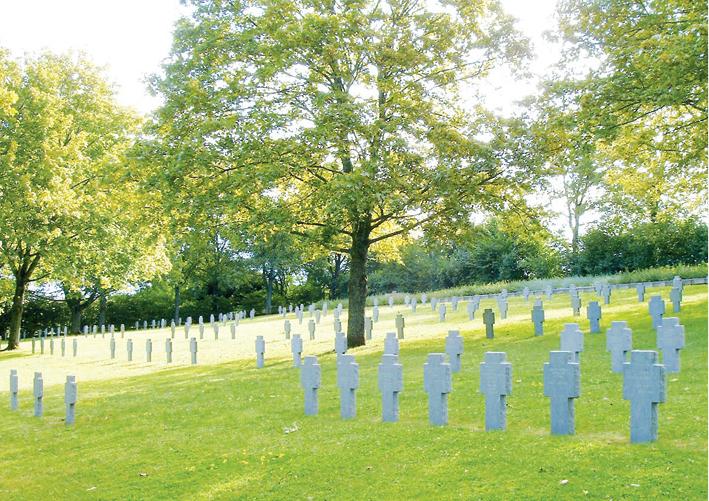
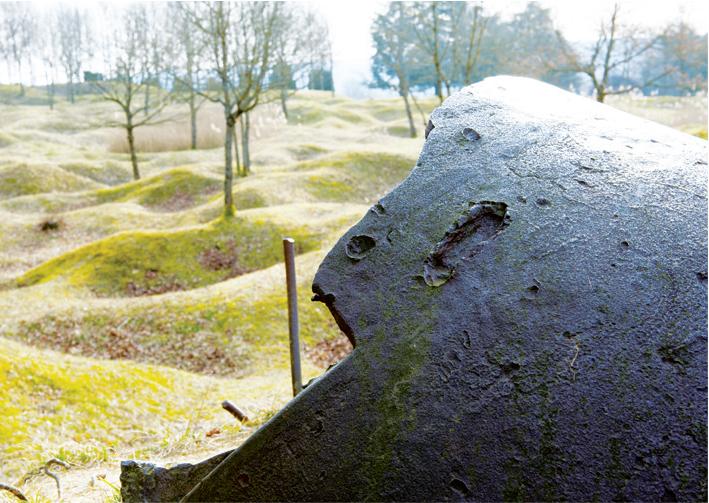
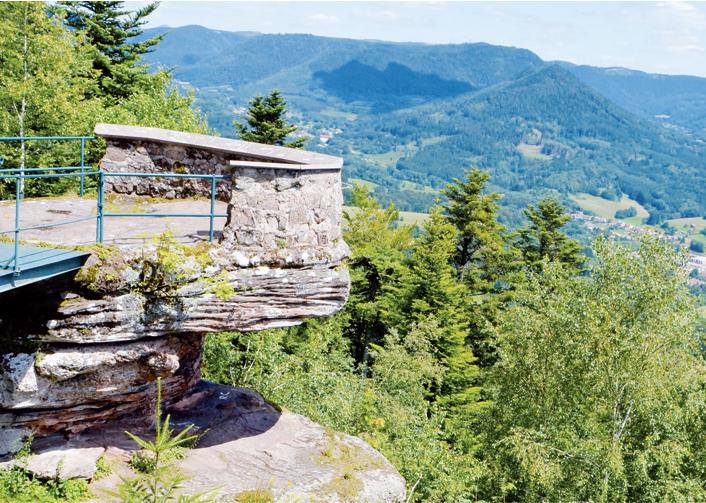
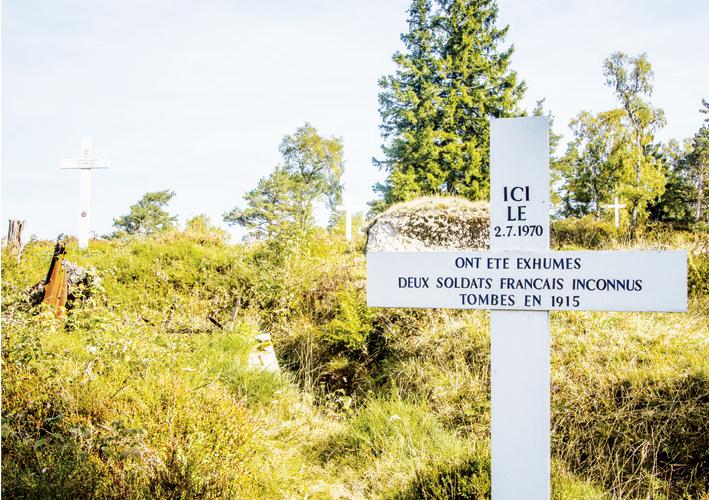
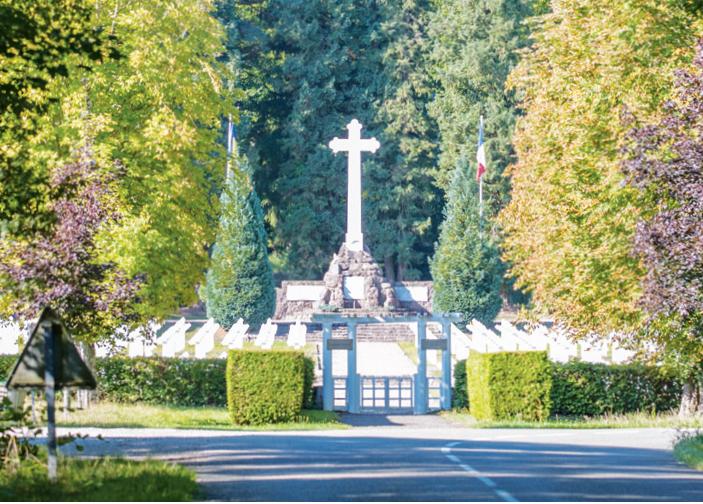
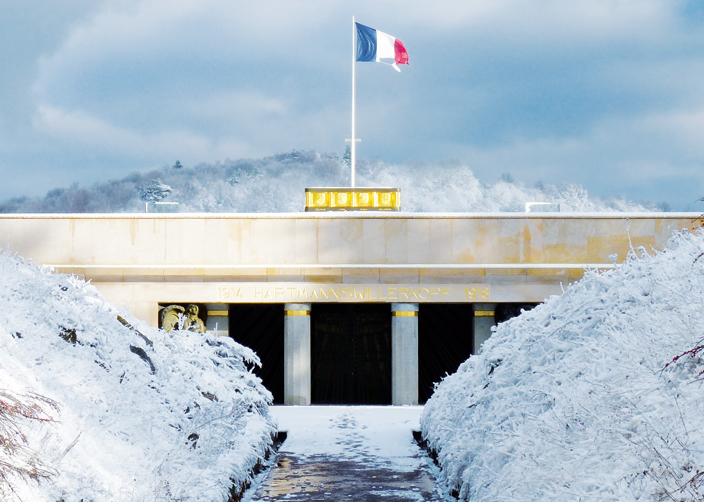
Summary
DATE : 26 November 2015
PLACE : École Militaire, Paris
OUTCOME : Third Remembrance Tourism Meetings
ORGANISED BY : Ministry of Defence and the Ministry of Tourism
CHAIRED BY : Jean-Marc Todeschini, Secretary of State for veterans and remembrance
Matthias Fekl, Secretary of State for foreign trade, the promotion of tourism and the French living abroad
Remembrance tourism is a major issue for the State and especially for the Ministry of Defence: a civic and educational element crucial to pass the memorial heritage on to the younger generations, a cultural and tourism issue also in order to preserve historical testimony and develop the territories.
War graves, major national remembrance sites, national museums, traditional museums and other memorial sites... in France and abroad, the Ministry of Defence has an extraordinarily rich historic and memorial heritage that must be protected, renovated and promoted. It is therefore only natural that the Ministry of Defence, the second largest cultural operator in the state, has become a partner for those territories working to promote remembrance tourism.
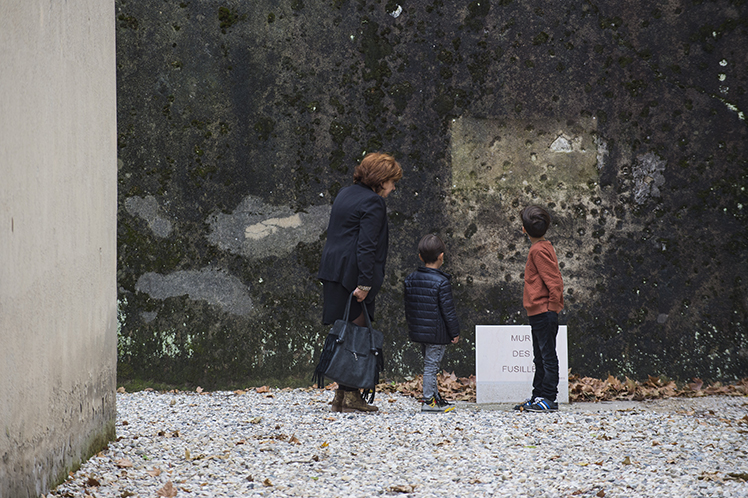
Visitors in front of the firing squad wall at Montluc prison in Lyon, Rhône.
© ECPAD / A. Karaghezian
THE MAJOR SITES: THE MEMORY OF CONTEMPORARY CONFLICTS
Places of memory and contemplation, the nine major remembrance sites are venues for national commemorative ceremonies. In paying tribute to the memory and sacrifice of these soldiers, remembrance sites contribute to young people's civic education and help pass the values of the Republic on to them. Each of these major sites evokes an aspect of contemporary conflicts. Among these are the two most iconic military cemeteries in France: the national cemeteries of Notre-Dame de Lorette, in Pas-de-Calais and Douaumont with the Bayonet Trench, in the Meuse, that recall the sacrifice of the soldiers fallen during the Great War. Five other major sites are given over to the Second World War: the Memorial of Fighting France at Mont Valerien in Suresnes (Hauts-de-Seine), the National Memorial of Montluc Prison in Lyon, the Memorial to the Martyrs of Deportation, on the Île de la Cité in Paris, the site of the former Natzweiler-Struthof concentration camp in Alsace and the Memorial to the Landing and Liberation of Provence, at Mont Faron in Toulon. For the decolonisation period, two major sites pay tribute to the veterans of colonial conflicts: the Indochina Wars Memorial in Fréjus, and the Memorial to the War in Algeria and Fighting in Morocco and Tunisia, on Quai Branly in Paris.
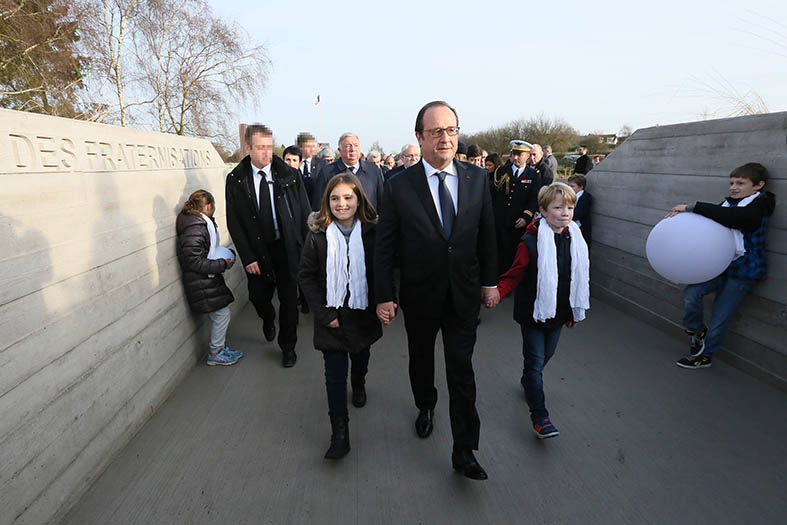
Inauguration of the monument by the President of the Republic.
© Presidency of the Republic
Close to three hundred thousand visitors flock to these major sites each year. The increase in visitor numbers, the changes to take account of the public's new expectations and the absolute necessity to transmit the memory on to the younger generation have led the DMPA to undertake major work programmes at these memorial sites in recent years. These programmes started with the creation of the European Centre of Deported Resistance Fighters (CERD) in Struthof that opened in 2005. Similarly, at the Fréjus Memorial, a renovated educational room was opened to the public in 2010. A permanent exhibition and documentation centre were set up in Mont-Valérien. Since then the programme has continued with renovations to the Deportation Martyrs Memorial and the Mont Faron Memorial.
THE DEFENCE MINISTRY'S RICH CULTURAL AND HISTORIC HERITAGE
The Ministry of Defence runs three national museums: the Army Museum at Les Invalides, the Air and Space Museum at Le Bourget and the National Naval Museum at Le Trocadero along with its four annexes in the ports of Brest, Port-Louis, Rochefort and Toulon. These three public institutions have been awarded the "Musée de France" label and receive over two million visitors a year.
The Ministry also has 17 other museums all over the territory. 16 weapons museums illustrate the history, traditions, crafts and techniques of the various component parts making up the French Land Army (artillery, armour, cavalry, marines, Foreign Legion, parachutists, engineers, communications, logistics, Train et Equipages, mountain troops, light aircraft for the Land Army...) and the Military Health Museum.
Moreover, many prestigious buildings classified as historical monuments are the property of the State and are entrusted to the Ministry of Defence: the Hôtel National des Invalides, the École Militaire, the Château de Vincennes or the Fortifications of Vauban. Determined to preserve and promote this unique heritage, the Defence and Culture ministries have for the last 35 years been cooperating through an annual agreement to finance monument restoration projects over the entire national territory.
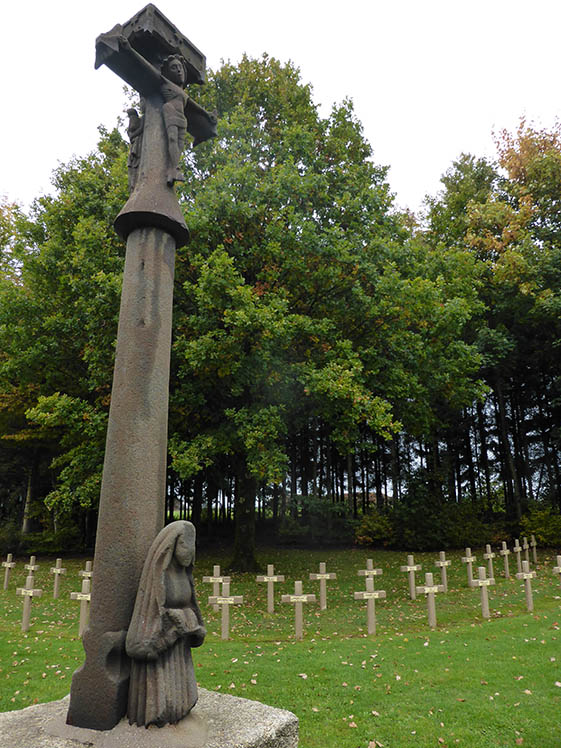
Maissin Cemetery, Belgium
© SGA-DMPA / G. Pichard
CARING FOR THE GRAVES OF SOLDIERS WHO DIED IN ACTION FOR FRANCE
Nearly 900,000 bodies are buried in 266 national cemeteries, 2,200 communal military sections and seven foreign military cemeteries in mainland France. Around one thousand burial sites are also present in 80 countries where 230,000 French soldiers are buried. A pluriannual programme (2011-2018) has been drawn up for priority restoration of First World War cemeteries. It provides for the renovation in France of over forty national cemeteries and military sections in communal graveyards accounting for nearly 100,000 graves and 66 ossuaries, not to mention work on overseas sites, in particular in Belgium and on the former Eastern front. A programme to replace history information panels in these cemeteries and in the main military sections was also launched in 2014. Finally, a landscape charter drawn up in 2015 sets down the general site planning and development principles to help visitors contemplate in the best possible conditions but also to enable them to learn and understand the history of the site and the soldiers buried there.
SUPPORT LOCAL TERRITORIAL PROJECTS
While the Ministry of defence is a major player in remembrance tourism, it is also a promoter of such tourism by encouraging the development of local partnerships to improve or rehabilitate sites. The Ministry supports communities and associations that have coherent and high quality remembrance projects. Already some 20 projects have been supported all over the country. Thus, the Ministry took part in the development of the Hartmannswillerkopf (Haut-Rhin) with the renovation of the crypt, the monument and ossuary and the construction of a Franco-German historial inaugurated at the end of 2015.
Similarly, the activities carried out by the La Meuse Departmental Council have been supported for the last six years: rehabilitation of the World Peace Centre in Verdun, restoration of the Douaumont ossuary, work on the Vaux and Douaumont forts and renovation of the Verdun Memorial, which has just reopened to the public. The Defence Ministry is also working with the Nord-Pas-de-Calais regional council in an ambitious project to promote and develop tourism at such remembrance sites as the Ring of Remembrance and the War and Peace History Centre in Souchez near the national cemetery of Notre-Dame de Lorette.
In the Somme, the Ministry is taking part in redesigning the Museum of the Great War in Péronne and the Interpretation Centre in Thiepval. The creation of the Rivesaltes Camp Memorial (Pyrénées-Orientales), inaugurated in October 2015 by the Prime Minister, the rehabilitation of the former Bobigny railway station (Seine-Saint-Denis) or the establishing of a memory trail dedicated to the Resistance in Morvan (Nièvre) also received financial support.
The Ministry of Defence also helps remembrance sites develop their programmes by funding cultural activities (temporary exhibitions, publications...), educational projects or tourism tools such as remembrance circuits. Partnership agreements along these lines have been signed with various sites such as the Péronne Historial, the Milles Camp Memorial (Aix-en-Provence) or the Study and Research Centre on internment camps in Le Loiret and the deportation of the Jews (CERCIL).
Due to the interest of many countries in remembrance of contemporary conflicts, the State's remembrance policy extends beyond the borders of France and takes on an international dimension: monuments in tribute to the countries involved in the two world wars are renovated or established. Thus, a French monument will be built in Memorial Park in Wellington, New Zealand. France thus pays tribute to its allies and several projects such as the renovation of the La Fayette Escadrille Memorial in Marnes-la-Coquette (Hauts-de-Seine) or the construction of a Canadian Memorial in Loos-en-Gohelle (Pas-de-Calais) should attract foreign tourists to France.
STRUCTURING THE SECTOR: THE ROLE OF THE MINISTRY AND SETTING UP A NETWORK
France therefore has a remembrance tourism offer that is as invaluable as it is impressive. To bring together memorial sites and remembrance tourism partners, the Ministry of Defence has set up the contemporary conflict museum and memorial network (MMCC). This professional network promotes synergies between its members, coordinates their initiatives and facilitates their integration both into the State's remembrance policy and that conducted locally to promote tourism sites.
In addition, the Ministry of Defence and the Ministry of Tourism signed a partnership agreement in 2004 to structure remembrance tourism. The goal is to have an internationally visible offer of excellence emerge beyond the commemorations related to the two world wars. The first action is to measure visitor numbers and assess the economic importance of this tourism sector. The first national study on remembrance tourism was carried out in 2010 - 2011. It revealed that historical sites related to contemporary conflicts attracted over six million visitors in 2010 and generated close to 45 million euros in turnover.
To keep track of this very popular trend, an observation platform, developed in partnership with the Ministry of Tourism and its "Atout France" operator, went online in 2015. This tool is used to see how the sector is changing, keep track of trends and the impact of the major commemorations. Thus, attendance at remembrance sites is steadily increasing: in 2014, the number of visitors was 14 million, 42% higher than the previous year.
For example, the Struthof site welcomed 172,745 visitors in 2014 (+ 5% over 2013). The Douaumont ossuary had 419,000 visitors the same year (+72% over 2013).
The second action is to set up a "Qualité TourismeTM" label specific to remembrance sites. This approach is based on the national "Qualité TourismeTM" brand administered by the Tourism Ministry. The goal is to improve the reception given to people visiting these sites. Another action is to participate in the "Great war" and "Normandy Remembrance Tourism" destination contracts. The State is a partner to these two contracts, with "Atout France" and the local authorities concerned. These projects also promote the two destinations abroad and aim at developing a professional approach to remembrance tourism among territories especially as regards receiving visitors.
The last action is to develop innovative mediation tools. Both ministries encourage the use of new technologies to help visitors understand the history of the remembrance sites and to accompany them on their visits. In 2015, they took part in a call for digital projects as part of the Destination Normandy contract. For its part, the Ministry of Defence funds digital technology-based projects that promote remembrance sites. Last year, it funded a remembrance circuit for the "Battle of Abbeville" in the Somme.
The contemporary conflict museum and memorial network is a formidable development tool that now has over 90 members all over France. In recent months, it has been opening up to foreign sites that wish to join such as the "In Flanders Fields" museum in Ypres in Belgium.
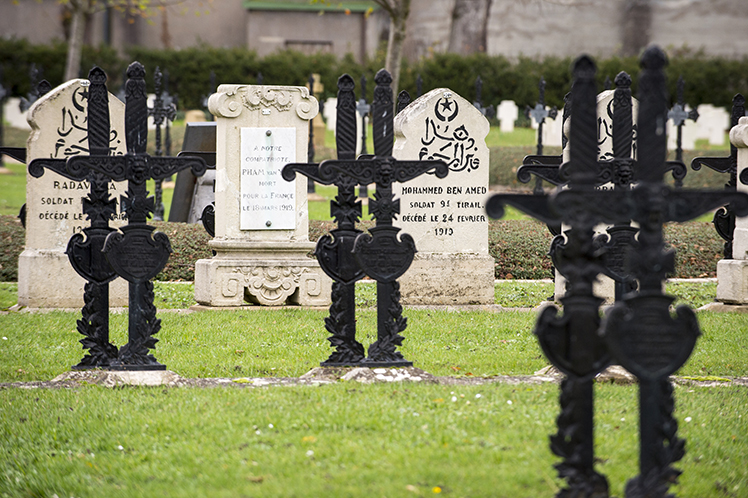
National Cemetery of Metz Chambière, Moselle
© ECPAD / J. Lempin
Author
Laure Bougon - Head of remembrance tourism at the DMPA
Read more
MONTLUC PRISON IN LYON, A MAJOR NATIONAL REMEMBRANCE SITE
Like Jean Moulin and the children of Izieu, close to 10,000 people were interned in Montluc prison during the German Occupation. Klaus Barbie the former Gestapo chief in Lyons, was symbolically imprisoned there in 1983 before the trial in 1987 that sentenced him to life imprisonment for crimes against humanity.
Now a memorial this site pays tribute to the resistance fighters, Jews and hostages that went through Montluc before being deported, executed or exterminated.
The site is managed by ONAC-VG and offers a permanent exhibition on the history of Montluc prison, guided tours and workshops for schools, but also a series of commemorations related to the different remembrance aspects of the site.
THE FRATERNISATION MONUMENT AT NEUVILLE-SAINT-VAAST
During the First World War, fraternising between French, British and German soldiers took place on the front from Belgium to the Swiss border. At the initiative of film director Christian Carion and the association ""Noël 14"", the Arras Urban Community decided to erect a monument in Neuville-Saint-Vaast, near the French, Czechoslovak, German and British military cemeteries and the key remembrance tourism sites in Nord-Pas-de-Calais.
The work made by Gerard Collin-Thiebaut and landscape designer Sensomoto was inaugurated on 17 December 2015 by the President of the Republic. The Ministry of Defence participated in this project.
REMEMBRANCE TOURISM IN BELGIUM, THE ACTION OF THE MINISTRY OF DEFENCE
The bodies of 34,556 French soldiers killed during the two world wars are buried in 114 cemeteries. The Consulate General of France in Brussels, a DMPA operator for the maintenance, renovation and promotion of French military cemeteries, strives to preserve the memory of these soldiers: it carries out rehabilitation and development work (implementation of a landscape charter) and takes part in a large number of commemorations.
As part of the development of remembrance tourism, the Consulate has supported the main Museum of the Great War in Belgium, ""In Flanders Fields"" in Ypres. A database listing the names and places of burial of the soldiers who died on Belgian soil in 1914-18 will soon be available. In 2016, ""In Flanders Fields"" will join the contemporary conflict museum and memorial network run by the Ministry of Defence.
RIVESALTES, INTERNMENT REMEMBRANCE
Inaugurated by the Prime Minister in October 2015, the Rivesaltes Camp Memorial near Perpignan is a key site for the history and remembrance of internment in France. The memorial is a venue for sharing and debate with educational activities at the core of the project.
The Rivesaltes Camp Memorial is built on the former F island of the camp, in the middle of the barracks remains, the last witnesses to a camp which interned over sixty thousand people. Designed by architect Rudy Ricciotti who chose ""to confront the hidden violence of this place"", the building, partially buried in the ground, fits perfectly into its environment.
In this 1,000 m² permanent exhibition, visitors discover the unique history of this camp and the people who were detained in it or who passed through it during the dramatic events of the 20th century: an internment camp in the South of France in 1941 and 1942 for Spanish Republicans, foreign Jews and Gypsies, a supervised living centre for collaborators and a P.O.W. depot between 1944 and 1948, a halting place for Harkis and their families between 1962 and 1964, a place of transit for the Guinean, North-Vietnamese and Madagascan riflemen in 1965. The staging of the exhibition puts the unique story of this long forgotten site back in the centre of the history of forced displacement of populations during this period with a wide diversity of histories and memories. It also recalls the historical context of French internment camps between 1938 and 1946.
Passing on history is at the heart of educational activities
Its multiple resources - exhibitions, cultural and scientific programming, the teaching centre and documentation centre - all go to make the memorial a place for sharing and debate with symposia, seminars and conferences open to all. An educational offer has been developed for young people by the educational department and adapted to all class levels. To do this, the memorial team, boosted by the presence of six teachers seconded by the Rectorate, gets involved in educational projects and supports teachers and their pupils during visits and when carrying out work, preparing and overseeing teacher training sessions.
Some educational activities are developed in connection with such events as ""The Nights of the Memorial"". These events bring together the public and personalities, artists and representatives of civil society, who tell their stories or explain their approach. Other cultural events - European Heritage Days or the National week for the fight against racism and anti-Semitism - are all opportunities to associate schools during visits, conferences, roundtables or shows. ""Meetings of young Europeans"" are also organized each year. These activities involving young people help foster cross-generational dialogue and spread the memorial's humanist message.
Moreover, the memorial now has a Scientific Council to continue research into the history of the camp, collect testimonies, enrich the documentary bases and publish books. The scientific project is to expand the story of the camp to all the humanities by finding extensions in the contemporary world in particular as regards the displacement of populations.
Agnès Sajaloli - Director of the Memorial
Memorial Site
Online articles
Remembrance site
Articles of the review
-
The event
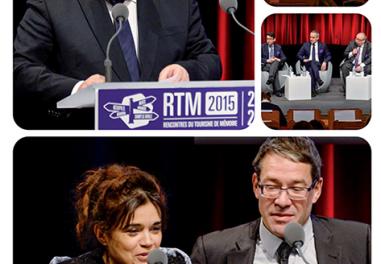
The Remembrance Tourism Meetings 2015
Read more -
The figure
Remembering the deported
Established at one end of the Île de la Cité in Paris, behind the apse of Notre-Dame Cathedral, the Deportation Memorial has benefited from an enormous programme of restoration. Its new content is to be inaugurated in April 2016, on the occasion of the National Day of Remembrance of the Deportation....Read more -
The interview
Christian Berger
Director of tourism for the Nord-Pas-de-Calais region, Christian Berger promotes remembrance sites in the region on a national and international level. A land of battles and fighting in the past, the Nord-Pas-de-Calais region today is a land of history, heritage and culture.
Read more
Related articles
- Protecting our memorial heritage
- Remembrance tourism, a national issue
- War Memorials
- La Première Guerre mondiale (1914-1918)
- L'Australie et la Nouvelle-Zélande dans la Grande Guerre
- The Canadians and the Great War
- Les soldats canadiens dans les tranchées de France et de Belgique
- Ypres, 22 avril 1915 : les premières attaques au gaz de combat
- The battle of the Somme
- L'enfer de Douaumont - 14 juillet 1916
- Lieux de mémoire autour de la bataille de Vimy
- The Lafayette Escadrille



